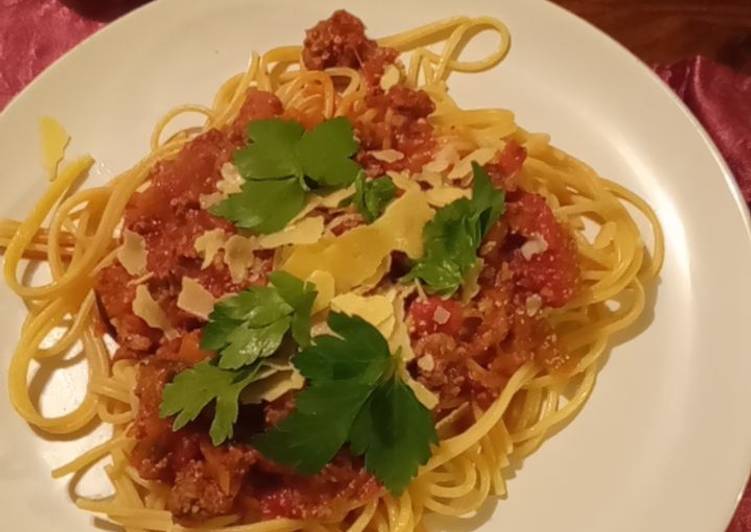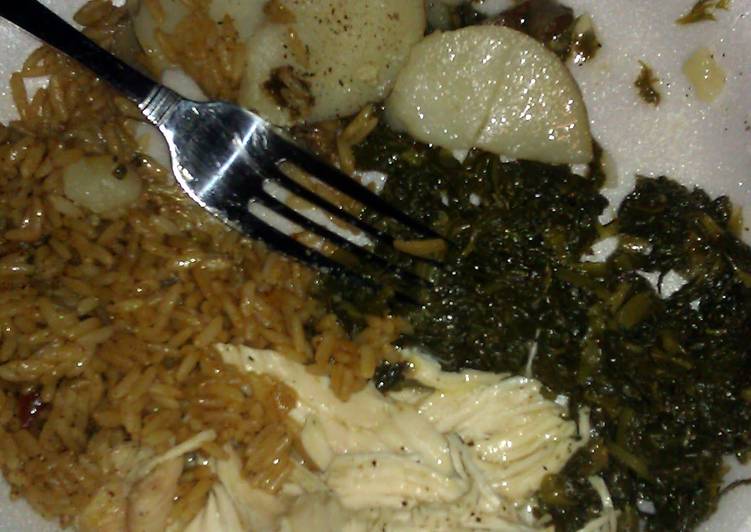
Hello everybody, hope you’re having an amazing day today. Today, I will show you a way to prepare a special dish, traditional spaghetti al ragù bolognese. It is one of my favorites food recipes. For mine, I’m gonna make it a little bit tasty. This will be really delicious.
Italian chef, Gennaro Contaldo shows you how to cook the traditional version of the popular dish, spaghetti Bolognese in this recipe video. The ragù alla bolognese is probably the king of the meat sauces. As I said in the introduction of another ragù recipe published in this website This quantity is enough for topping pasta (personally I think that ragù alla bolognese is at its best with homemade tagliatelle rather than spaghetti) and.
Traditional Spaghetti Al Ragù Bolognese is one of the most favored of recent trending meals in the world. It is enjoyed by millions every day. It’s easy, it’s fast, it tastes yummy. They are fine and they look wonderful. Traditional Spaghetti Al Ragù Bolognese is something that I’ve loved my entire life.
To get started with this particular recipe, we have to prepare a few components. You can have traditional spaghetti al ragù bolognese using 18 ingredients and 8 steps. Here is how you can achieve that.
The ingredients needed to make Traditional Spaghetti Al Ragù Bolognese:
- Prepare 2-4 rashers bacon, diced
- Take 2 brown onions, finely diced
- Prepare 2 carrots, finely diced
- Take 2 celery sticks, finely diced
- Make ready 2 garlic cloves, crushed
- Take 2-3 Rosemary sprigs
- Make ready 500 g beef mince
- Get 800 g Italian whole tomatoes
- Take Handful basil leaves
- Prepare 1 tsp dried oregano
- Prepare 2 tbsp tomato paste
- Take 1 beef stock cube
- Take 125 ml white wine
- Take 6 cherry tomatoes, halved
- Prepare 1 dash nutmeg
- Make ready 500 g spaghetti
- Get 1 cup full cream milk
- Make ready Parmesan cheese
Our best ever spaghetti bolognese is super easy and a true Italian classic with a meaty, chilli sauce. This recipe comes courtesy of BBC Good Food user Andrew Balmer. This spaghetti al ragu recipe is honestly my entire childhood on a plate. Dat dit gebeurde is eigenlijk wel bijzonder.
Instructions to make Traditional Spaghetti Al Ragù Bolognese:
- Cook the bacon on a medium heat
- Add the onion, carrot, celery sticks, garlic and the leaves from the rosemary and cook until soft for about 10 minutes, stirring often
- Move the vegetables to one side, increase the heat to high and add the beef mince, stirring until the beef is completely browned
- Add the Italian tomatoes, a handful of basil leaves, 2 tbsp tomato paste, tsp oregano, 125ml white wine, beef stock cube and 6 halved cherry tomatoes. Stir, breaking up all the tomatoes and bring to a boil. Add a dash of nutmeg.
- Reduce to a gentle simmer and cover with a vented lid. Cook for 1 hr, stirring occasionally
- When the sauce is nearly finished, reduce 1 cup milk to 1/3 its volume on the stove and mix in with the sauce
- Cook 500g spaghetti in about 5L boiling water for 10 minutes, stirring occasionally
- Drain the spaghetti and serve with the sauce, parmesan and basil to taste
De Italiaanse keuken hangt zwaar aan tradities en zomaar In een echte Italiaanse Ragu alla Bolognese ontbreekt dus de tomaat. Een andere opvallende afwezige is de knoflook. There are strict rules, that many restaurants in the US don't follow, like ragu is never accompanied with spaghetti. The rich dish is also must be made with egg pasta, better if fresh pasta, and the pasta must be tossed with the ragu, not. Recette de Spaghettis sauce bolognaise : la recette facile > Recettes.
So that’s going to wrap it up for this special food traditional spaghetti al ragù bolognese recipe. Thanks so much for reading. I am confident that you can make this at home. There is gonna be more interesting food at home recipes coming up. Remember to bookmark this page in your browser, and share it to your family, colleague and friends. Thanks again for reading. Go on get cooking!

